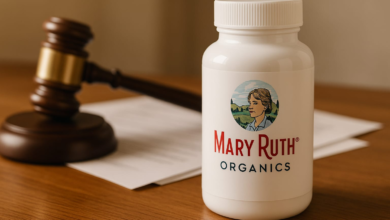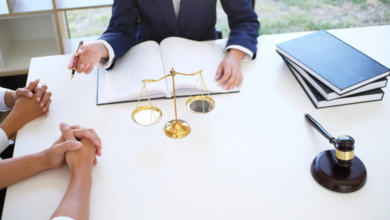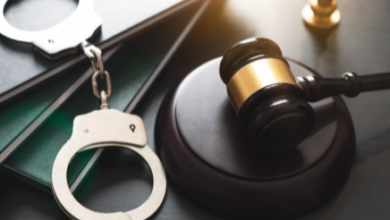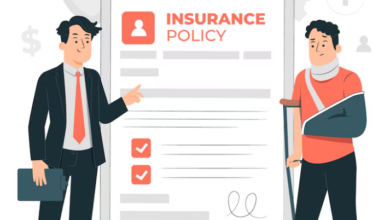Wasilla Car Accident Laws: Your Legal Rights and Next Steps

Car accidents happen when you least expect them. You’re driving through Wasilla on a regular Tuesday, maybe picking up groceries or heading to work, and suddenly everything changes in an instant.
After a Wasilla car accident, you’re dealing with more than just damaged metal and broken glass. Alaska’s legal system has specific rules that determine who pays what, and these rules can make or break your financial recovery.
Alaska Doesn’t Have No-Fault Insurance
Unlike some states, Alaska makes someone responsible for paying. The driver who caused the crash has to cover the damages through their insurance. This sounds straightforward until you realize how insurance companies fight every claim.
If you caused the accident, you’re paying. If someone else did, their insurance should pay. But proving who’s at fault isn’t always clear-cut, especially when both drivers have different stories about what happened.
Insurance adjusters will look for any reason to shift blame onto you. They might say you were driving too fast for conditions or that you could have avoided the accident if you’d been more careful.
See also: Gym Bicycle Weight Loss: How Tech, Wellness, and Creativity Are Shaping the Way We Train
Minimum Insurance Coverage in Alaska
Every Alaska driver must carry at least:
- $50,000 for one person’s injuries or death
- $100,000 for multiple people injured or killed
- $25,000 for property damage
Most people in Wasilla carry only the minimum required coverage because it’s cheaper. This creates problems when accidents cause serious injuries. The at-fault driver’s $50,000 policy might not even cover your hospital stay.
How Alaska Splits Fault
Alaska uses what lawyers call comparative negligence. Even if you’re mostly at fault, you can still collect some money from the other driver. But this works both ways.
Insurance companies love this rule because it gives them wiggle room to reduce payouts. They’ll examine every detail looking for ways to blame you partially.
The Two-Year Deadline
You have exactly two years from the accident date to file a lawsuit in Alaska. After that deadline passes, you lose your right to sue forever.
But waiting until near the deadline hurts your case badly. Evidence gets lost or destroyed. Witnesses move away or forget important details. Security cameras record over old footage.
Smart insurance companies know this timeline. They’ll stall negotiations hoping you’ll panic and accept a low offer rather than risk losing everything.
The Settlement Trap
Insurance adjusters call soon after accidents. They sound friendly and concerned about your wellbeing. “We want to resolve this quickly so you can move on with your life,” they’ll say.
Then they offer a settlement that might cover your current medical bills but nothing more. No money for future treatment, lost wages, or pain and suffering.
Once you sign their release form, it’s over. You can’t come back later when you discover your back injury needs surgery or when you develop headaches from a concussion.
Your Car Needs Fixing Too
Property damage seems simpler than injury claims, but it has its own problems. The insurance company might send you to their preferred repair shop, which could use aftermarket parts instead of factory originals.
If you still owe money on your car loan, you could end up paying thousands out of pocket even though the accident wasn’t your fault.
When Pain Shows Up Later
Adrenaline masks injury symptoms immediately after accidents. You might feel fine at the scene, then wake up the next morning barely able to move.
Whiplash, concussions, and herniated discs often don’t cause pain for days or weeks. By then, the insurance company might question whether your injuries really came from the accident.
This timing issue creates pressure to settle quickly before you know how badly you’re hurt. But settling too fast can cost you thousands in future medical expenses.
Uninsured Drivers Create Problems
About one in eight Alaska drivers operates without insurance. In rural areas around Wasilla, this number might be higher because people struggle to afford coverage.
Hit by an uninsured driver? You’re depending on your own uninsured motorist coverage to pay your bills. Many people don’t carry this coverage because it costs extra.
Some drivers carry fake insurance cards or let their policies lapse after buying them. You won’t discover this until you file a claim and learn their insurance doesn’t exist.
Medical Liens Complicate Things
Hospitals often treat accident victims knowing insurance will eventually pay the bills. They place liens on your potential settlement to guarantee payment.
Resolving these liens requires understanding medical billing and legal procedures most people have never encountered.
Protecting Yourself After an Accident
Take photos immediately if you’re physically able. Document vehicle damage, injuries, skid marks, and road conditions. Get names and phone numbers from witnesses before they leave the scene.
See a doctor within 24 hours even if you feel okay. Having medical records from the accident date strengthens your case significantly.
Don’t give recorded statements to the other driver’s insurance company. They’ll use your words against you later, often taking statements out of context.
Keep receipts for everything related to the accident – prescription medications, medical co-pays, transportation to appointments, and time off work.
The decisions you make in the first weeks after your accident determine your financial recovery. Insurance companies profit when accident victims don’t understand their rights.
Don’t let confusion cost you thousands of dollars you deserve.





